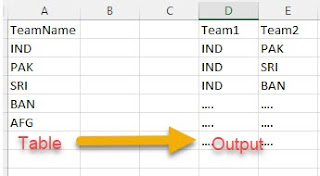Super quick solution if you ever encountered/stuck with this scenario in Azure Data Factory Let's say there is an if condition activity and you need to evaluate the output value from a previous activity (could be metadata or could be inside for each loop ). The values to be evaluated against are more than two in number. The programming equivalent of it would when variable1 not in (Value 1, Value 2, Value 3, Value 4) If you have some experience working in the azure data factory, you would like to use the following expression @and(not(contains(item().name, 'Value1')), not(contains(item().name, 'Value2')), not(contains(item().name, 'Value3')), not(contains(item().name, 'Value4')), not(contains(item().name, 'Value5')), not(contains(item().name, 'Value6')) ) However, this will not work out and you will get an error message. Instead, try using a variable. Assign the value to the variable before evaluating and then us...






